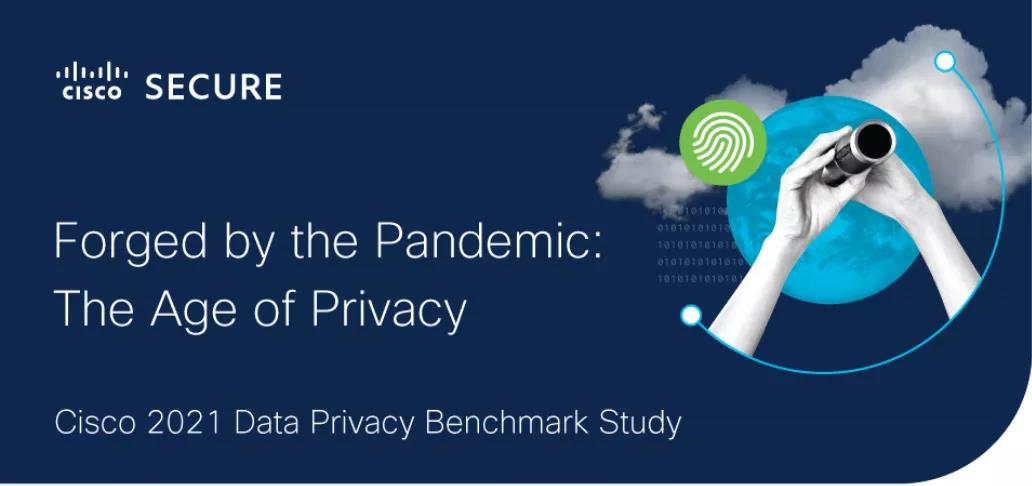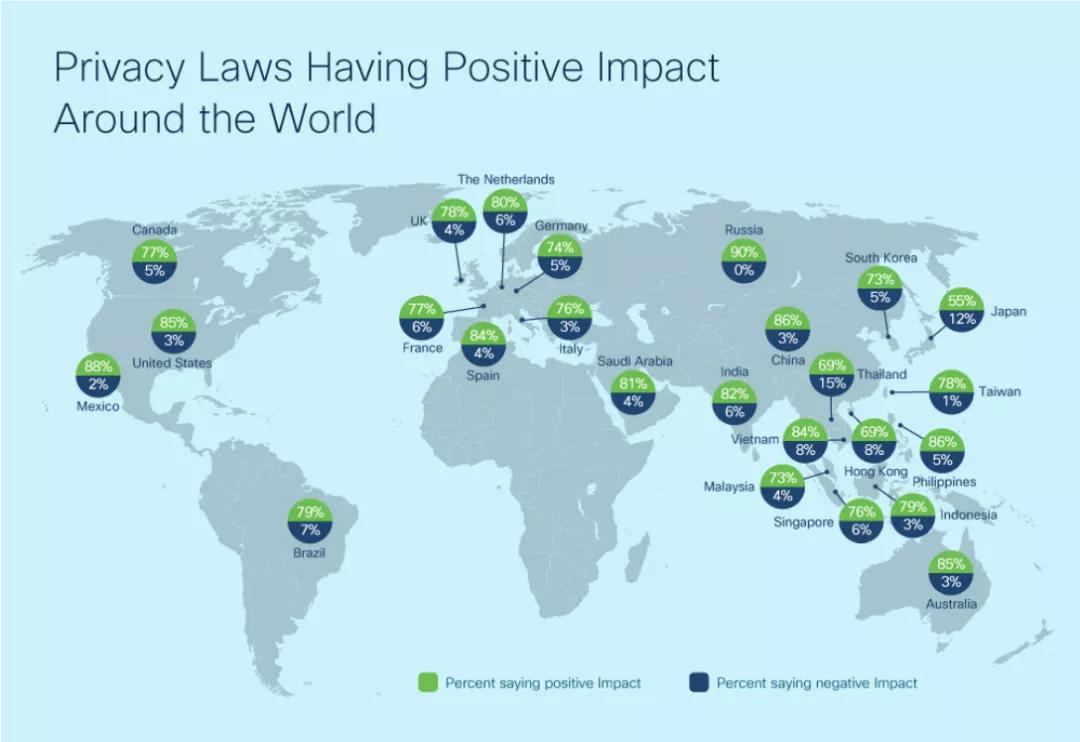原创 思科联天下 思科联天下
2021 年 3 月 15 日,北京——思科近日發布了《 2021 年數據隱私基準研究報告》,這是思科第四次對全球企業隱私實踐進行年度調查。研究發現,在疫情期間,企業更加強調隱私保護的重要性,並且那些採取有力的隱私保護措施的企業獲得了更多的收益。

這項獨立的匿名調查涵蓋了來自 25 個國家的 4,400 名安全和隱私專業人士,探討了他們對隱私立法的態度以及他們向管理層報告的隱私指標。

在疫情引發的混亂與不確定時期,人們突然被要求隨時分享個人信息以幫助遏制新冠肺炎疫情的傳播。同時,人們將大部分生活轉移到網上,這一趨勢以往需要數年才能實現。
隨著人類互動以及對數字化參與程度的巨大變化,企業正在面臨來自數據隱私方面的挑戰,它們需要遵守法律,制止疫情蔓延,並尊重個人權利。而消費者和公眾也越來越關注他們的個人數據將被如何使用。
報告中還包括了以下重要發現:
隱私保護不僅是一個合規問題。如今,企業已經將其視為基礎的員工權力,同時它也是管理層高度關注的一項關鍵任務。
60% 的企業表示,他們沒有為轉變為遠程工作所涉及的隱私和安全要求做好準備
93% 的企業求助於他們的隱私團隊來應對這些挑戰
87% 的消費者對遠程工作、互動和連接所需的工具的隱私保護問題感到擔憂
目前,90% 的企業向其最高管理層和董事會報告隱私指標
在推動數字化進程與業務目標時,市場明顯地趨向將隱私標準化,這是一項不可改變的要求。
已有 140 多個司法管轄區通過了綜合隱私法,近 80% 的受訪者認為這些法律具有積極影響
大多數人願意因應對疫情的需求而分享個人健康信息,以確保工作場所安全,但他們較難接受將這些信息用於研究等其他用途。
57% 的受訪者支持雇主利用數據實現工作場所安全,而不到一半的人支持地點追踪、聯繫人追踪、披露感染者信息以及利用個人信息進行研究
在經濟增長與新冠疫情恢復的道路上,隱私保護和更大規模的網絡安全生態系統將發揮關鍵作用。
隨著經濟和社區開始復蘇,將出現許多重要挑戰。這些挑戰將考驗著政府、企業和個人如何收集、管理和保護個人數據,並兼顧個人權利和公共利益的平衡。
隱私保護投資仍然具備吸引力,75% 的企業在減少安全損失、增強靈活性和創新性、提高運營效率以及改善客戶忠誠度和信任度等方面看到了巨大的商業價值。尤其,72% 的中國企業認為隱私保護投資是推動企業創新的關鍵因素。
90% 的全球企業表示外部的隱私認證是影響他們採購決策的重要因素。而 89% 的中國受訪企業做出了同樣的選擇,與全球企業一致。
全球企業在隱私保護方面的支出為 240 萬 美元,亞太地區企業此項支出平均達到 230 萬美元。中國企業在隱私保護方面投資最高,平均支出為 300 萬美元。
超過三分之一的企業獲得的收益是其投資的兩倍。報告顯示,平均而言,亞太地區企業可獲得的收益是其投資的 1.9 倍,中國企業獲得的收益是其投投資的 1.7 倍。
通過隱私保護投資,亞太地區企業預計獲得 290 萬美元的收益,而中國企業將可能獲得 370 萬美元的收益。
思科副總裁兼首席隱私官 Harvey Jang 表示:“
隱私權已經成為一項基礎的員工權力,並上升為管理層的一項關鍵任務。隨著遠程工作的持續加速,隱私對推動數字化、企業彈性、敏捷性和創新性等方面變得越來越重要。”
思科大中華區副總裁,安全事業部總經理卜憲錄表示:“
後疫情時代企業數字化轉型的步伐將不可逆轉的加速。在這個過程中,業界的最佳實踐是採用零信任架構,對任意用戶按需進行身份認證和狀態檢查,實現任意設備從任何地點到任意應用的安全可視化和可控性,以及在多雲和混合雲環境下的安全策略一致性,從而全面保護數據安全性和隱私。

